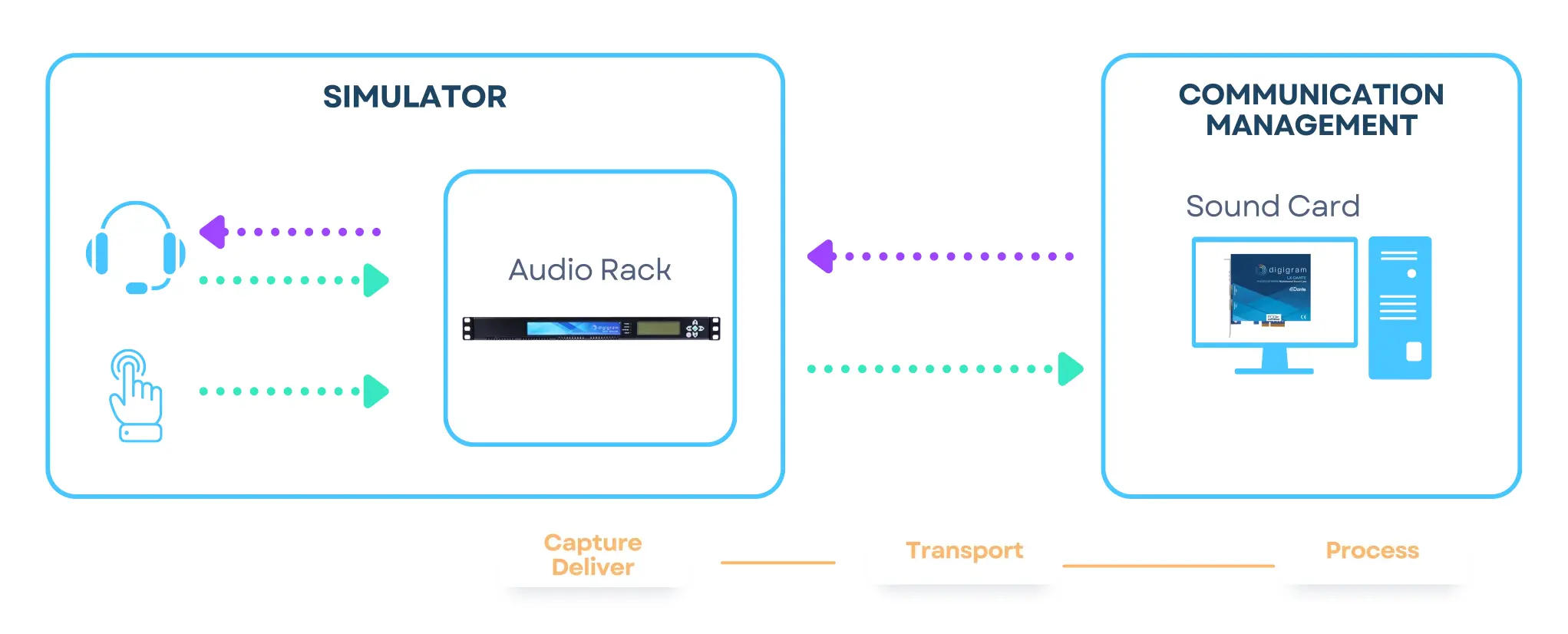THE NEED
CAE, the leading provider of training and simulation solutions, needs to upgrade a rack used for the management of audio communications between instructors and trainee pilots in flight simulators. The actual system is based on an inhouse design that has not been updated and lacks the low-latency networked audio technology required for replicating real flight conditions. CAE needs to implement a new solution that will provide low latency transport of multiple audio channels over a network, in order to process on a distant workstation the audio channels coming from the pilots and instructors microphones in the flight simulator. The next step is to send these processed contents back to the pilots and instructors headphones. Ultimately, the goal is to guarantee seamless communication between instructors and trainee pilots.
THE CHALLENGE
CAE has to address several challenges when renewing their system, mainly to support a high channel count mixed with control streams on the same network. Additionally, they need to maintain a latency of less than 16ms between microphones and headphones, while going through the network, the processing workstation, and the network again in order to replicate real flight conditions.
The analog inputs and outputs should also be compatible with the headsets used in aircrafts, and with some specific connected devices. Ultimately, CAE needs to deploy the new solution swiftly in order to minimize development time and costs. They are looking for a COTS based solution.
THE SOLUTION
Leveraging their expertise in high quality audio interfaces and in audio transportation, Digigram can provide a perfectly suited solution for CAE that will fully meet the company’s criteria, both in terms of swift development and low latency. The main idea here is to select the most suited existing product within Digigram’s portfolio of solutions designed for the transport of multiple audio channels over Ethernet networks. Building on existing solutions with a proven design and extensive performance records is a smart move that enables the project to move forward while saving on development time. This first step towards a seamless integration into CAE’s flight simulators needs additional development to fully meet CAE’s requirements .
The global solution delivered to CAE integrates a combo of audio racks and a multichannel sound card, both with networked audio connectivity. Of course, additional developments are required in order to comply with the characteristics of the pilot’s headsets (high gain microphone preamplifier with very low distortion, amplified outputs, bias voltages, very low crosstalk) and to offer the requested specific on-board functions and programming interfaces (on-board low latency audio mixing and diagnostics, remote control of all the parameters, software application based on the sound card).
Today, every flight simulator delivered by CAE is equipped with Digigram’s solution, ensuring reliable and in less than 12ms audio communication between instructors and trainee pilots during training sessions.
THE BENEFITS
Digigram’s solution provides CAE with a modern and reliable audio communication solution for their flight simulators, addressing their needs for ultra low-latency, high-channel count, and mixed control streams – all requirements ensuring secure and clean communications when audio is critical. Built on existing Digigram products, this solution saves on development time and costs, and has become a standard feature in CAE’s flight simulators, contributing to a realistic, secure and immersive training experience for pilots.



